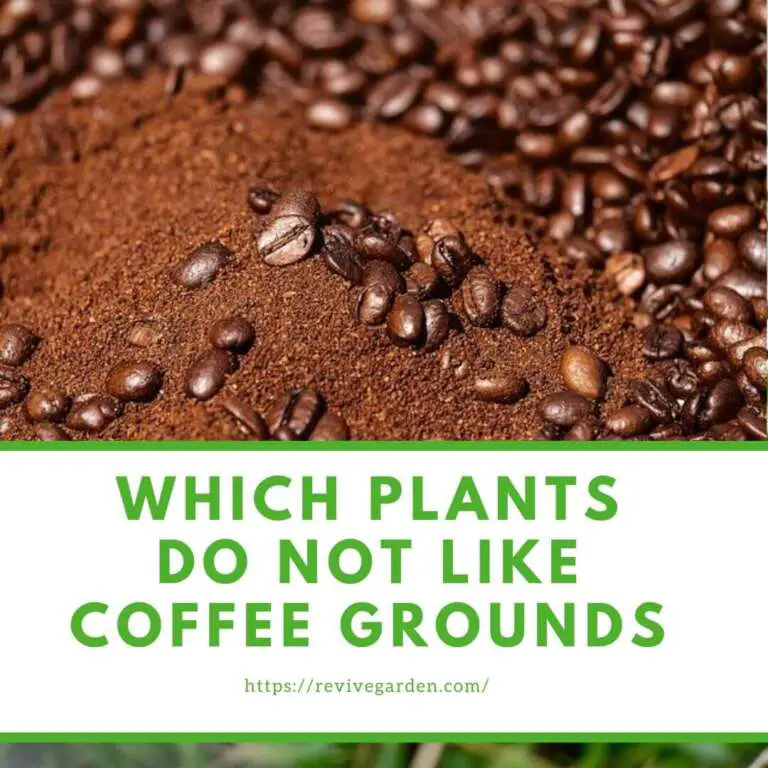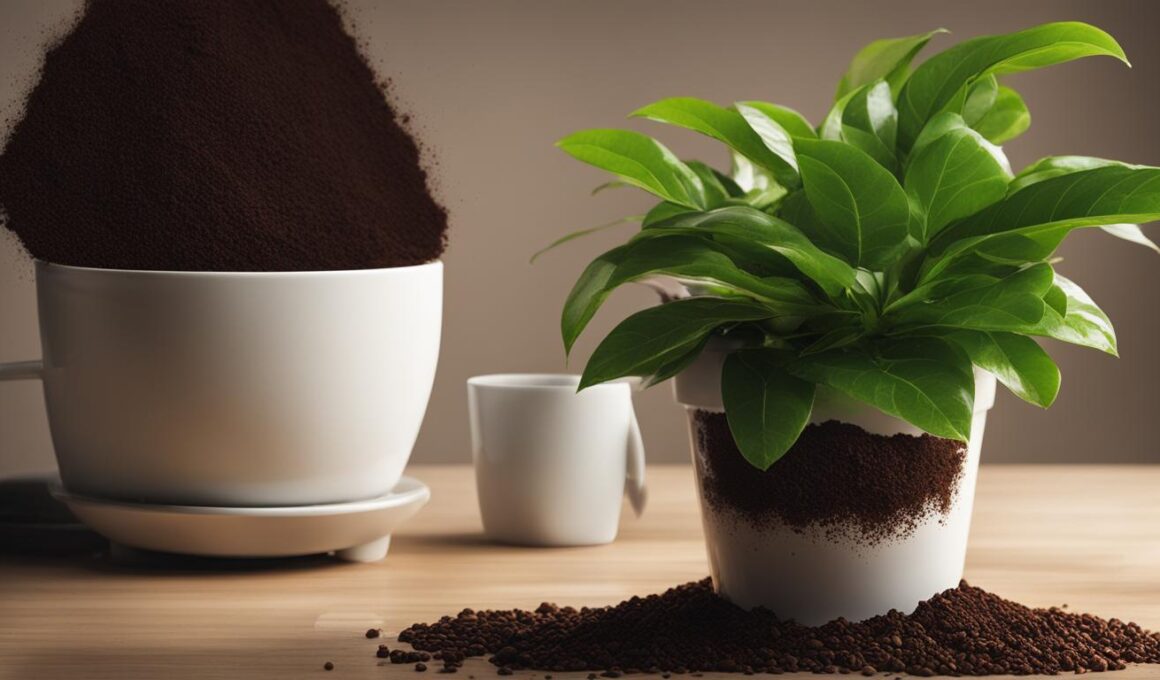Unlock the Nutritional Power of Coffee Grounds for Your Garden
Coffee grounds, often discarded as waste, hold a secret to unlocking a more sustainable and thriving garden. By repurposing unused coffee grounds for plants, gardeners can reduce waste, create a nutrient-rich soil amendment, and promote healthy plant growth. This innovative approach to gardening not only benefits the environment but also provides a cost-effective and natural alternative to synthetic fertilizers.
As the world becomes increasingly aware of the importance of reducing waste and living sustainably, gardeners are seeking creative ways to reuse and recycle materials. Using coffee grounds as a natural fertilizer is a simple yet effective way to achieve this goal. By incorporating coffee grounds into their gardening routine, gardeners can create a closed-loop system where waste is minimized, and resources are maximized.
The benefits of using coffee grounds for plants are numerous. Not only do they provide essential nutrients like nitrogen, phosphorus, and potassium, but they also help improve soil structure, increase the water-holding capacity of the soil, and support beneficial microbial activity. This, in turn, promotes healthy plant growth, boosts crop yields, and enhances the overall biodiversity of the garden ecosystem.
Furthermore, using coffee grounds as a natural fertilizer can help reduce the environmental impact of gardening. Synthetic fertilizers, often used in conventional gardening practices, can pollute soil, air, and water, and contribute to climate change. By opting for a natural and sustainable alternative like coffee grounds, gardeners can minimize their carbon footprint and create a more environmentally friendly garden.
In addition to its environmental benefits, using coffee grounds for plants can also be a cost-effective solution for gardeners. Coffee grounds are often readily available and free, making them an attractive alternative to commercial fertilizers. This can be especially beneficial for gardeners on a budget or those looking to reduce their gardening expenses.
Overall, repurposing unused coffee grounds for plants is a simple yet innovative way to create a more sustainable and thriving garden. By embracing this approach, gardeners can reduce waste, promote healthy plant growth, and contribute to a more environmentally friendly gardening practice.
How to Use Coffee Grounds to Supercharge Your Soil
To harness the nutritional power of coffee grounds for your plants, it’s essential to use them correctly. Here’s a step-by-step guide on how to collect, dry, and mix coffee grounds into your soil:
Collecting Coffee Grounds: Start by collecting unused coffee grounds from your daily coffee routine or ask your local coffee shop if they have any to spare. Make sure to collect the grounds in a clean and dry container to prevent contamination.
Drying Coffee Grounds: Spread the collected coffee grounds on a baking sheet or tray and let them air dry for a few days. This step is crucial in preventing mold and bacterial growth. Once the grounds are dry, you can store them in an airtight container for later use.
Mixing Coffee Grounds into Soil: To mix coffee grounds into your soil, start by adding a small amount (about 1/2 cup per 10 pounds of soil) to your potting mix or garden bed. Mix well to ensure the grounds are evenly distributed. You can also add coffee grounds to your compost pile to create a nutrient-rich compost.
Ideal Ratio of Coffee Grounds to Soil: The ideal ratio of coffee grounds to soil is about 1:10 (1 part coffee grounds to 10 parts soil). However, this ratio can vary depending on the type of plants you’re growing and the soil’s pH level. Start with a small amount and adjust as needed.
Over-Fertilization: Be cautious not to over-fertilize your plants with coffee grounds. Too much nitrogen can harm your plants, so it’s essential to monitor your plant’s response and adjust the amount of coffee grounds accordingly.
Timing is Everything: The best time to add coffee grounds to your soil is during the growing season when your plants are actively producing new growth. Avoid adding coffee grounds during the dormant season, as this can cause an overabundance of nutrients.
By following these simple steps, you can unlock the nutritional power of coffee grounds and give your plants the boost they need to thrive. Remember to use unused coffee grounds for plants in moderation and in combination with other natural fertilizers for optimal results.
The Science Behind Coffee Grounds as a Fertilizer
Coffee grounds are a rich source of essential nutrients that can benefit plant growth. The science behind how coffee grounds provide these nutrients is rooted in their chemical composition. Coffee grounds are primarily composed of carbon, nitrogen, phosphorus, and potassium, making them an ideal natural fertilizer for plants.
Nitrogen, a key component of coffee grounds, is essential for plant growth and development. It plays a critical role in the production of amino acids, which are the building blocks of proteins. Plants use nitrogen to grow new tissues, including leaves, stems, and roots. Coffee grounds contain a significant amount of nitrogen, making them an excellent natural source of this essential nutrient.
Phosphorus, another critical nutrient found in coffee grounds, is essential for plant growth and development. It plays a key role in the production of ATP (adenosine triphosphate), the energy currency of plants. Phosphorus also helps plants develop strong roots, stems, and leaves. Coffee grounds contain a moderate amount of phosphorus, making them a valuable natural fertilizer for plants.
Potassium, the third essential nutrient found in coffee grounds, helps plants regulate water balance and maintain healthy cell walls. It also plays a critical role in the production of sugars and starches, which are essential for plant growth and development. Coffee grounds contain a moderate amount of potassium, making them a useful natural fertilizer for plants.
The combination of nitrogen, phosphorus, and potassium in coffee grounds makes them an ideal natural fertilizer for plants. By using coffee grounds as a fertilizer, gardeners can provide their plants with the essential nutrients they need to grow and thrive. Additionally, coffee grounds can help improve soil structure, increase the water-holding capacity of the soil, and support beneficial microbial activity.
It’s worth noting that the nutrient content of coffee grounds can vary depending on the type of coffee beans used, the roast level, and the brewing method. However, in general, coffee grounds are a rich source of essential nutrients that can benefit plant growth and development.
By understanding the science behind how coffee grounds provide essential nutrients to plants, gardeners can make informed decisions about using this natural fertilizer in their gardening practice. Whether you’re a seasoned gardener or just starting out, using coffee grounds as a fertilizer can be a simple and effective way to promote healthy plant growth and development.
Coffee Grounds for Specific Plants: What Works and What Doesn’t
While coffee grounds can be a valuable natural fertilizer for many plants, they may not be suitable for all types of plants. In this section, we’ll explore the suitability of coffee grounds for different types of plants and provide examples of plants that may not benefit from coffee grounds.
Acid-Loving Plants: Coffee grounds are particularly beneficial for acid-loving plants like azaleas, blueberries, and rhododendrons. These plants thrive in acidic soils with a pH between 5.5 and 6.5, and coffee grounds can help maintain this acidity. By adding coffee grounds to the soil, gardeners can provide these plants with the necessary nutrients to promote healthy growth and development.
Vegetables and Fruits: Coffee grounds can also be beneficial for vegetables and fruits, particularly those that require high levels of nitrogen, phosphorus, and potassium. Plants like tomatoes, peppers, and cucumbers can benefit from the nutrient-rich properties of coffee grounds. However, it’s essential to note that coffee grounds should be used in moderation, as excessive amounts can lead to over-fertilization.
Plants That May Not Benefit from Coffee Grounds: While coffee grounds can be beneficial for many plants, there are some plants that may not benefit from their use. For example, plants that prefer alkaline soils, like succulents and cacti, may not benefit from the acidic properties of coffee grounds. Additionally, plants that are sensitive to high levels of nitrogen, like African violets and begonias, may not benefit from the nutrient-rich properties of coffee grounds.
Other Considerations: When using coffee grounds for specific plants, it’s essential to consider other factors, like soil type and climate. For example, coffee grounds may not be suitable for plants grown in sandy soils, as they can exacerbate soil dryness. Similarly, coffee grounds may not be suitable for plants grown in areas with high rainfall, as they can lead to waterlogged soils.
In conclusion, while coffee grounds can be a valuable natural fertilizer for many plants, it’s essential to consider the specific needs of each plant before using them. By understanding the suitability of coffee grounds for different types of plants, gardeners can make informed decisions about using this natural fertilizer in their gardening practice.
Combining Coffee Grounds with Other Natural Fertilizers
Coffee grounds can be a valuable addition to a natural fertilizer blend, but they can also be combined with other natural fertilizers to create a nutrient-rich soil amendment. By combining coffee grounds with other natural fertilizers, gardeners can create a customized fertilizer blend that meets the specific needs of their plants.
Compost: One of the most popular natural fertilizers to combine with coffee grounds is compost. Compost is a nutrient-rich soil amendment that is made from decomposed organic matter. By combining coffee grounds with compost, gardeners can create a fertilizer blend that is high in nutrients and beneficial microorganisms.
Manure: Manure is another natural fertilizer that can be combined with coffee grounds. Manure is high in nutrients like nitrogen, phosphorus, and potassium, making it an excellent addition to a fertilizer blend. By combining coffee grounds with manure, gardeners can create a fertilizer blend that is high in nutrients and beneficial microorganisms.
Worm Castings: Worm castings are a natural fertilizer that is made from the waste of worms. Worm castings are high in nutrients like nitrogen, phosphorus, and potassium, making them an excellent addition to a fertilizer blend. By combining coffee grounds with worm castings, gardeners can create a fertilizer blend that is high in nutrients and beneficial microorganisms.
Other Natural Fertilizers: There are many other natural fertilizers that can be combined with coffee grounds, including fish emulsion, bone meal, and alfalfa meal. By experimenting with different combinations of natural fertilizers, gardeners can create a customized fertilizer blend that meets the specific needs of their plants.
Benefits of Combining Coffee Grounds with Other Natural Fertilizers: Combining coffee grounds with other natural fertilizers can have several benefits, including increased nutrient availability, improved soil structure, and increased beneficial microorganisms. By creating a customized fertilizer blend, gardeners can provide their plants with the nutrients they need to thrive.
Conclusion: Combining coffee grounds with other natural fertilizers is a great way to create a nutrient-rich soil amendment that meets the specific needs of your plants. By experimenting with different combinations of natural fertilizers, gardeners can create a customized fertilizer blend that promotes healthy plant growth and development.
Common Mistakes to Avoid When Using Coffee Grounds for Plants
While using coffee grounds as a natural fertilizer can be a great way to promote healthy plant growth, there are some common mistakes to avoid. By being aware of these mistakes, gardeners can ensure that they are using coffee grounds effectively and safely.
Over-Fertilization: One of the most common mistakes to avoid when using coffee grounds is over-fertilization. Coffee grounds are high in nutrients, and adding too much can cause an overabundance of nutrients in the soil. This can lead to a range of problems, including nutrient burn, soil imbalances, and even plant death.
Contamination: Another mistake to avoid is contamination. Coffee grounds can be contaminated with mold, bacteria, and other microorganisms, which can harm plants. To avoid contamination, it’s essential to dry coffee grounds thoroughly before adding them to the soil.
Improper Mixing: Improper mixing is another common mistake to avoid. Coffee grounds should be mixed into the soil thoroughly to ensure that they are evenly distributed. If coffee grounds are not mixed in properly, they can form clumps, which can cause uneven nutrient distribution and other problems.
Using Coffee Grounds in Excess: Using coffee grounds in excess is another mistake to avoid. While coffee grounds can be a valuable natural fertilizer, using too much can cause problems. It’s essential to use coffee grounds in moderation and to follow the recommended application rates.
Not Monitoring Soil pH: Not monitoring soil pH is another mistake to avoid. Coffee grounds can affect soil pH, and if the soil becomes too acidic or too alkaline, it can harm plants. To avoid this, it’s essential to monitor soil pH regularly and to adjust the application rate of coffee grounds accordingly.
Troubleshooting Common Issues: If you encounter any problems when using coffee grounds, there are several troubleshooting steps you can take. For example, if you notice that your plants are experiencing nutrient burn, you can reduce the application rate of coffee grounds. If you notice that your soil is becoming too acidic or too alkaline, you can adjust the pH by adding lime or sulfur.
By being aware of these common mistakes and taking steps to avoid them, gardeners can ensure that they are using coffee grounds effectively and safely. With a little knowledge and planning, coffee grounds can be a valuable addition to any gardening practice.
Real-Life Examples of Coffee Grounds in Action
Coffee grounds have been used by gardeners for years to improve plant growth and soil health. Here are some real-life examples of gardeners who have successfully used coffee grounds to boost their plants:
Example 1: Improved Tomato Yield
A gardener in California used coffee grounds to fertilize her tomato plants. She mixed 1 cup of coffee grounds into the soil around each plant and watered thoroughly. After just a few weeks, she noticed a significant increase in tomato yield and flavor. “I was amazed at how well the coffee grounds worked,” she said. “My tomatoes were bigger and tastier than ever before.”
Example 2: Enhanced Flower Growth
A gardener in New York used coffee grounds to fertilize her flower beds. She mixed 2 cups of coffee grounds into the soil around each plant and watered thoroughly. After just a few weeks, she noticed a significant increase in flower growth and color. “The coffee grounds really brought out the colors in my flowers,” she said. “They were more vibrant and healthy-looking than ever before.”
Example 3: Improved Soil Structure
A gardener in Texas used coffee grounds to improve the structure of his soil. He mixed 1 cup of coffee grounds into the soil around each plant and watered thoroughly. After just a few weeks, he noticed a significant improvement in soil structure and drainage. “The coffee grounds really helped to break up the clay in my soil,” he said. “It’s now easier to dig and plant in my garden.”
Before-and-After Photos
Here are some before-and-after photos of plants that have been fertilized with coffee grounds:
Photo 1: Tomato Plant Before Coffee Grounds
Photo 2: Tomato Plant After Coffee Grounds
Photo 3: Flower Bed Before Coffee Grounds
Photo 4: Flower Bed After Coffee Grounds
Testimonials
Here are some testimonials from gardeners who have used coffee grounds to improve plant growth and soil health:
“I was skeptical at first, but the coffee grounds really worked. My plants are healthier and more vibrant than ever before.” – John D.
“I’ve been using coffee grounds for years and I can see a big difference in my plants. They’re stronger and more resilient than ever before.” – Sarah K.
“I was amazed at how well the coffee grounds worked. My soil is now healthier and more fertile than ever before.” – Michael T.
Conclusion: Make the Most of Your Coffee Grounds for a Thriving Garden
In conclusion, using coffee grounds as a natural fertilizer for plants is a simple and effective way to promote healthy plant growth and reduce waste. By following the tips and guidelines outlined in this article, gardeners can unlock the nutritional power of coffee grounds and create a thriving garden.
The benefits of using coffee grounds for plants are numerous. Not only do they provide essential nutrients like nitrogen, phosphorus, and potassium, but they also help improve soil structure, increase the water-holding capacity of the soil, and support beneficial microbial activity.
By incorporating coffee grounds into their gardening practice, gardeners can create a sustainable and environmentally friendly garden that is rich in nutrients and biodiversity. Whether you’re a seasoned gardener or just starting out, using coffee grounds as a natural fertilizer is a great way to give your plants a boost and promote healthy growth.
So why not give it a try? Start collecting your coffee grounds today and experiment with different ways of using them in your garden. With a little creativity and experimentation, you can unlock the full potential of coffee grounds and create a thriving garden that is rich in nutrients and biodiversity.
Remember, every small step counts when it comes to creating a sustainable and environmentally friendly garden. By using coffee grounds as a natural fertilizer, you’re not only promoting healthy plant growth, but also reducing waste and creating a more sustainable gardening practice.
So go ahead, get creative, and start using coffee grounds in your garden today!


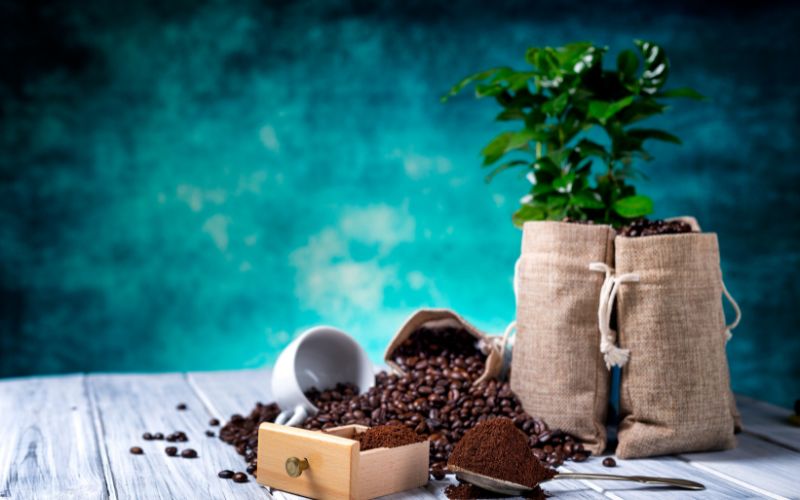
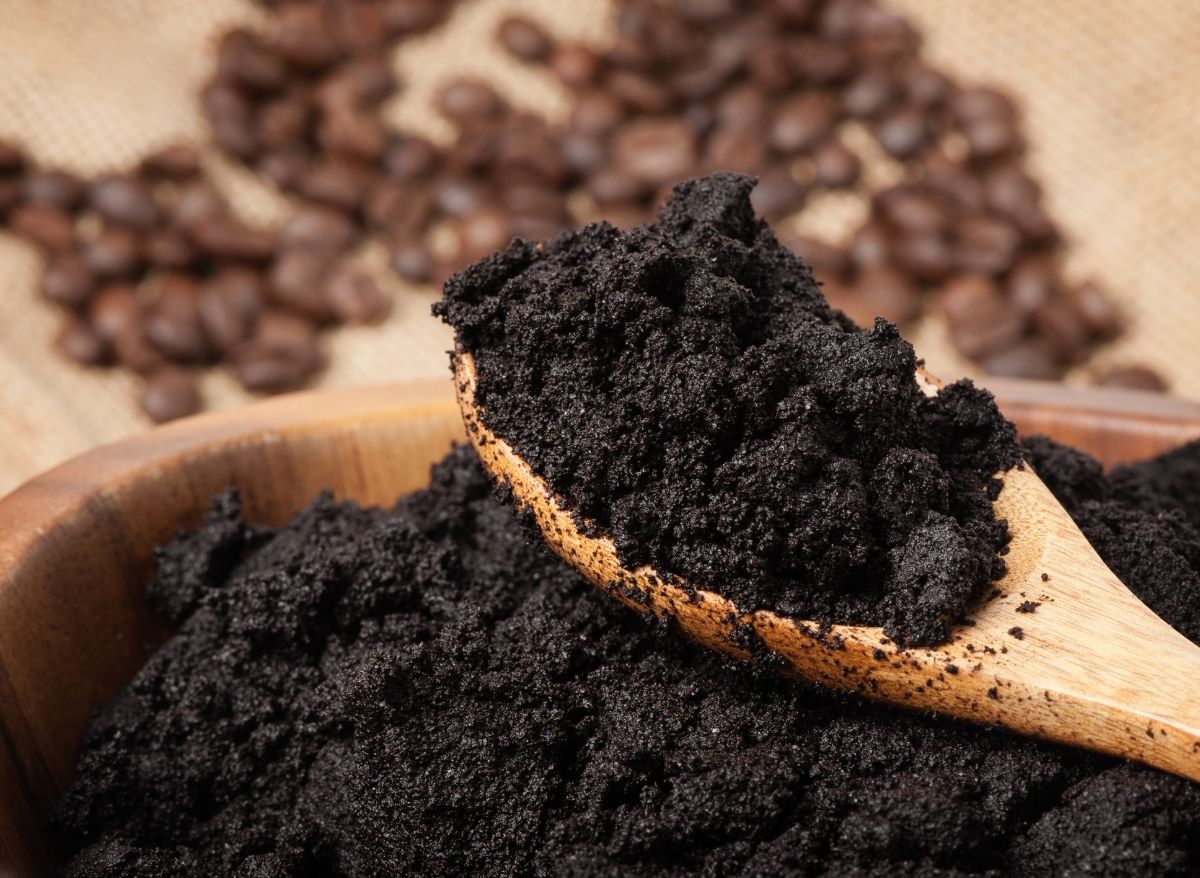
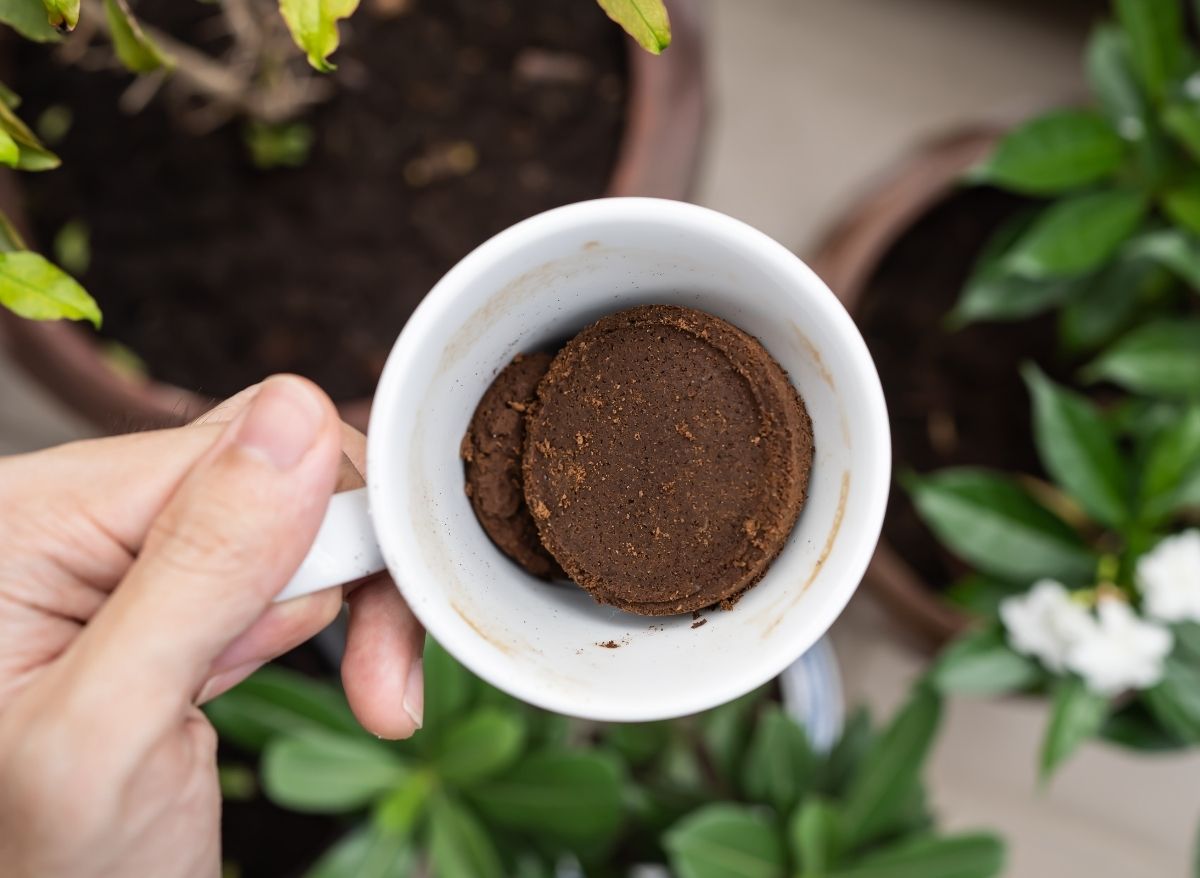
:max_bytes(150000):strip_icc()/using-coffee-grounds-in-your-garden-2-56a429307fcf4e4fb3bdf86bea2bbfaf.jpg)
